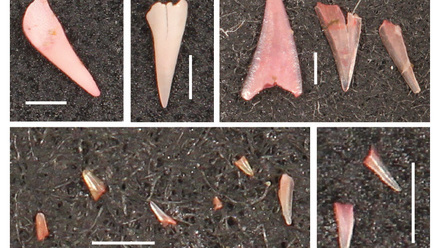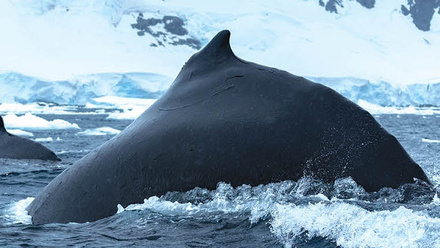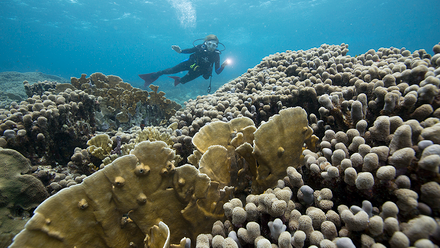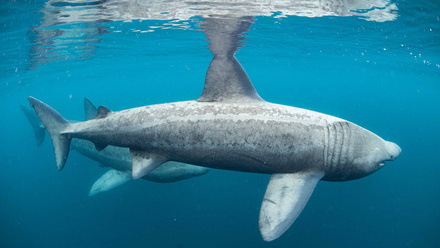Oceans of Change
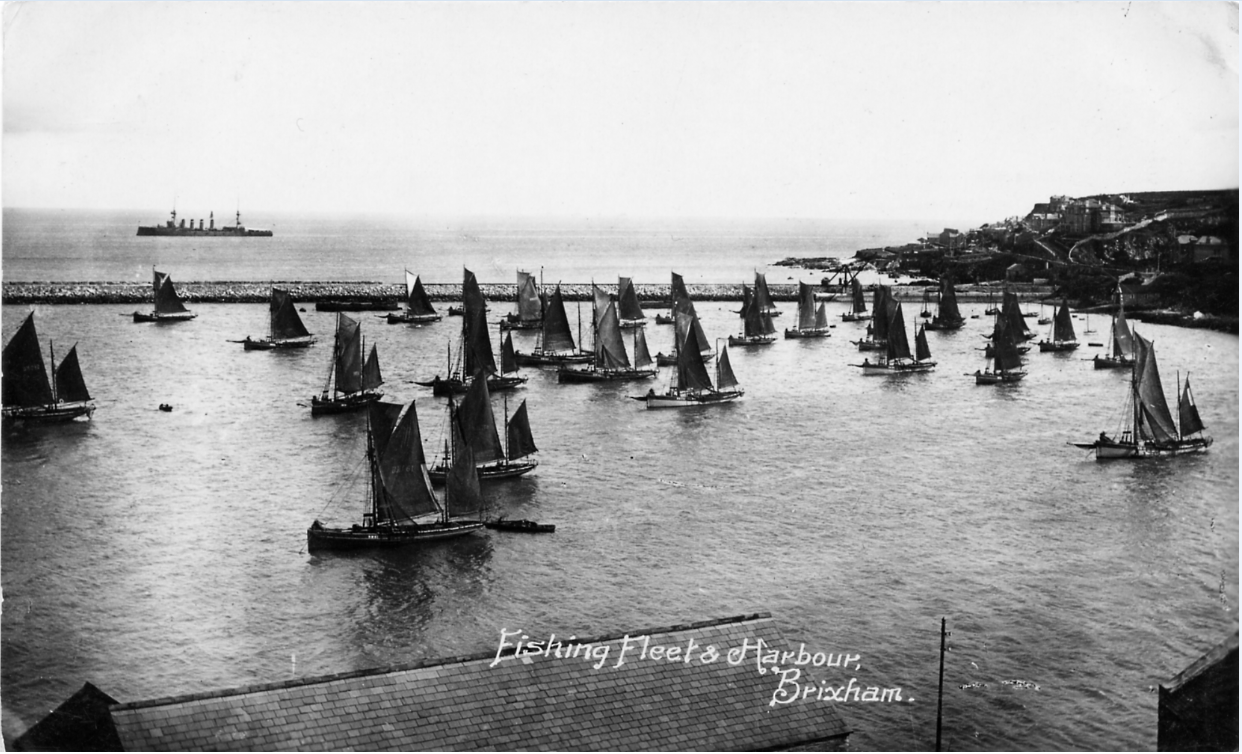
Brixham fishing fleet in harbour ca 1890-1900.
The Marine Biological Association was founded in 1884, as many will recall given the recent 125th Anniversary celebrations. It was forged by an influential group of scientists on the back of the International Fisheries Exhibition held in London in 1883, at which Thomas Huxley had famously declared the great sea fisheries inexhaustible. Less strident voices, like those of the then 36-year old Professor Ray Lankester, begged to differ, believing they had seen signs of depletion. With precious little data on fish stocks and fisheries, neither position was easy to prove, as the contemporary Royal Commission of Enquiry into bottom trawling concluded in 1885. The new MBA was therefore to focus the lens of scientific enquiry on life beneath the waves.
I often wonder what we modern scientists would make of the sea if we were miraculously transported back in time to fill the shoes of our predecessors in their new laboratory overlooking Plymouth Sound. How different might our notions of the workings of marine ecosystems be? Coastal scenes of fishing in old photographs and engravings suggest fish were larger, much more abundant, and catches of big species more varied than today, but it has been hard to find data to underpin such anecdotes.
The most positive outcome of the 1885 Royal Commission was to initiate fisheries data collection in 1886, with nationwide rollout by 1889. Those data offer a bracing perspective on the current state of UK seas as my former student Ruth Thurstan recently discovered. Despite 118 years of technological advance, landings of bottom fish into England and Wales—from a largely sail powered fleet—were five times greater in 1889 than in 2007. Landings peaked around the outbreak of World War II at an astonishing 17 times greater than today. Of course, landings crashed during both World Wars, reminding us that relative fishing effort has a lot to do with these peaks and troughs.
To gain a sharper insight into the changing nature of marine ecosystems, we need to account for the effects of changes in fishing power. Here a lovely study by Georg Engelhard of the Centre for Environment, Fisheries and Aquaculture Science proved a godsend. He had forensically pieced together the changing power of bottom trawlers from the sailing vessels of the 1880s to the hi-tech boats whose banks of blinking screens suck vast streams of information from the deep to uncover the secret haunts of fish beneath. One steam trawler in 1898 was equivalent to eight sailing trawlers, for example, while a diesel trawler in 2000 could do the work of 50 sail trawlers. The records show how many boats of what type were at work so we can calculate a measure of total fishing power for each year.
When you divide landings by fishing power, ‘peak fish’ shifts backwards from the late 1930s to the very first year of data collection. In 1889, we landed 17 times more fish per unit of fishing power expended than we land today. As prolific as these figures confirm, the seas probed by the MBA’s first scientists were not pristine. Hundreds of heartfelt testimonies by fishermen to Royal Commissions of Enquiry in the 1860s and 1880s reveal
widespread bewilderment and anger at the falling productivity of fisheries. For example, a line fisherman from the north-east of Scotland said in 1885 ‘[7 years ago] boats here say they can have got half a ton, 12 cwt and as high as 14 and 15 cwt [of haddocks], but the highest catch we had last year was 5.5 cwt, at about, I may say, 6 miles further off than formerly’. A similar lament from the north-east of England went ‘I have been going [to sea] 34 years … and when I commenced we would get 40 to 50 stone of fish, and now we cannot get over 4 or 5’.
The Royal Commission reports also included nuggets of data that enable us to trace fishing productivity backward to the middle of the 19th century. Fishermen in the 1860s landed a staggering 25 times more fish per unit of fishing power than today according to these numbers. Piecing together many statements from the 1866 enquiry on changes in fishing productivity, like the ones quoted above, we can push deeper into the early 19th century when sail trawling was mostly limited to the south coast. In the waters near the MBA’s Plymouth headquarters, gnarled old fishermen recalled catch rates 2 to 5 times higher in the early 1800s compared to the 1860s. Those catches included species hardly seen in these parts today, such as massive skates and halibut, wolffish and ling.
From early on, fishermen also railed against the destructive tendencies of the trawlers, and their observations show that life on the seabed was also undergoing a transformation. Accounts provide vivid sketches of rich and varied habitats. An 1837 description of Ireland’s Carlingford Lough noted that ‘The middle of the Loch is deep ... and the bottom occupied by an immense bed of oysters, of which vast quantities are taken to Dublin and other towns’. Charles Shore, a visitor to the Isle of Man was taken aback by the clarity of its waters in 1836: ‘The southern coast of Man yields much seaweed which supplies the Island with good manure. It may be seen waving to and fro at great depth, so extraordinary is the clearness of the water; a perfect submarine forest’.
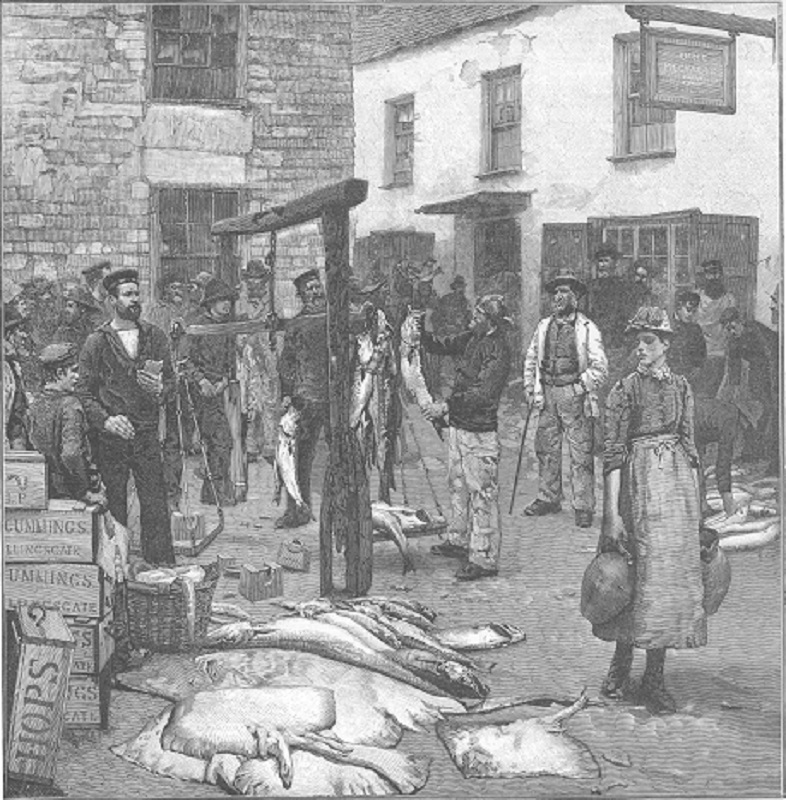
Skate and hake or ling amongst the fish catch at Polperro, Cornwall in the 1860s.
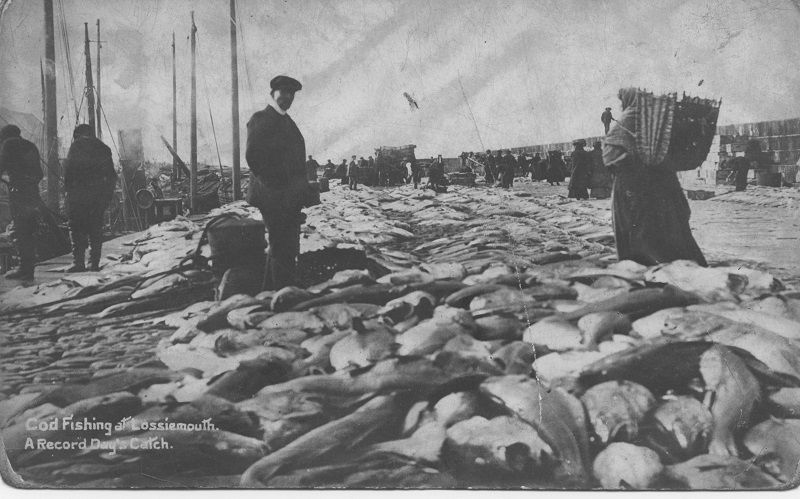
Record cod catch. Lossiemouth, Scotland.
These habitats were progressively stripped by trawl and dredge throughout the 19th and 20th centuries. One trawl fisherman from Scarborough told in 1885 of how ‘[50 years ago] we used to go to the back of west rock, that is abreast of Filey, very often, and at that time we could not trawl more than an hour and a half or two hours in consequence of the shells, what we call the clam shells, some dead ones and others alive. Those dead shells had at that time white and brown thusks in them, and all among these shells the soles inhabited; and we by this small beam net […] could get 40 and 50 pair of soles in a tide […]. Well now, you could take the same coble, the same net, the same everything, and trawl over the same ground and where there are no shells, and I would think we would not get five pair of soles in a tide […]. They have trawled [the shell fish] away…’. In view of the obvious damage being done, many fishermen campaigned to have trawling banned or restricted, like the men of Youghal in Ireland in 1837, who petitioned ‘The havoc and mischief occasioned by trawling is absolutely incalculable, as it tears up the ground ... the bag of the trawl often exhibiting one common mass of destruction ...’.
What different theories might we have spun, what alternative scientific paradigms would these seas have yielded to the modern eye? If we really want to know how people have changed the world, the long view is essential. When I was at school, full of youthful hubris, history seemed dull and irrelevant to me. Fortunately, I shrugged off such foolishness later in life. A few years ago, I pieced together the effects of 1000 years of exploitation on the sea (The Unnatural History of the Sea, Island Press). Writing the book, I soon realized that the ghosts of past fishermen and hunters were with us everywhere, even to the greatest depths of the ocean (where nutrient shuttling between surface and abyss by whales and giant fish has dwindled to a trickle, if you are wondering). Without history, we can never make sense of the forces that govern life beneath the waves, nor understand how best to manage the sea. The emerging field of historical ecology is leading a renaissance in our understanding of the sea.
But while the ghostly hand of industry past still clutches the oceans around us, it is joined today by new forces unimaginable to the people who plied these seas long ago. Those forces have been unleashed by the extraordinary expansion of humanity across the globe, coupled with our increasing technological prowess. What would the MBA’s first scientists make of Plymouth Sound today if they could be lifted from their graves and pressed back into service? They would find a world in the headlong grip of climate change and globalization. While many species familiar to them would have declined or disappeared from local waters, waves of new arrivals have ridden the spreading tendrils of warm water welling north, or jumped ship from distant ports. Perhaps the air would seem fresher to them, the stinking residues of sewage and refuse all but gone. But mud flats and beaches have gained grains of plastics, while synthetic chemicals lace the waters with effects unseen and hard to disentangle. The sea laps higher on the dockside and the waters turn litmus a shade brighter than before.
Would it shock them to find that people have become a dominant force shaping the sea, shifting the flow of currents, melting polar ice caps, greening the sea in some places while expanding ocean deserts in others, and choking life from vast tracts of seabed? The oceans still yield up catches to local fishermen, but nets are filled with smaller fry. And places like the Irish Sea, once noted for its huge fish, have been so raked and sieved by dredge and fine-mesh prawn trawl, that only prawns, scallops and small fish like dabs and red gurnard still thrive. The mice and cockroaches of the sea have usurped its elephants and lions.
Nobody willed it this way. Fishermen have not deliberately set out to destroy ocean life and undermine their own livelihoods. Their ingenuity and adaptability have simply outrun societal restraint. At every step-shift up in power – hook and line to sail trawl, sail trawl to steam, steam to diesel – marine life has shifted downward in abundance and variety. To keep the balance between fish and fishing, industrial power must be fettered and commercial fervour constrained. To be fair to the many who have tried, it is not easy, even if your only interest is in fishing. And we have only recently come to appreciate that it simply is not possible to balance nature conservation, healthy ecosystem functioning and fisheries profitability using the old regulatory toolbag of restrictions on gear and landings (some have yet to realize this). For that balance to be struck, we need something else: marine reserves.
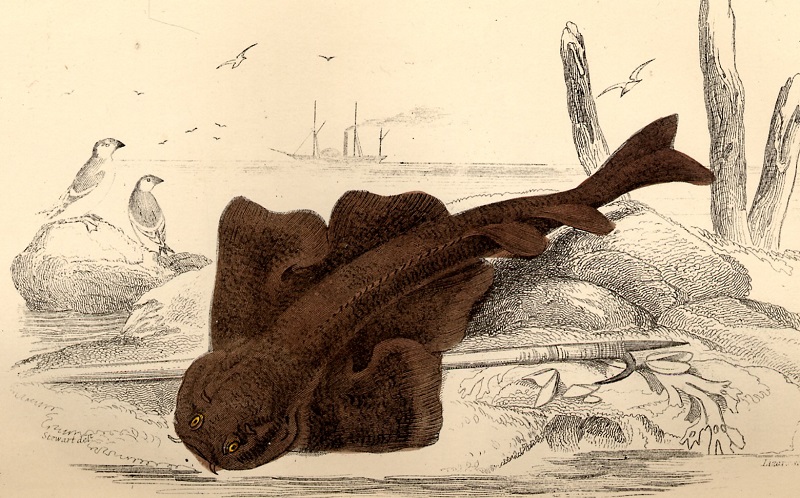
Once common around Britain, the angel shark has now virtually vanished and is considered to be extinct in the North Sea (IUCN, 2008). Image from A history of British fishes (Yarrell, 1836).
Marine reserves put places off limits to fishing, other exploitation and harm. They provide refuges in which vulnerable species can thrive and habitats can begin the decades-long journey back to vitality. By allowing big fish to return and reproduce, they will supply surrounding fisheries with young fish; a point understood even in the 19th century, as a Sunderland fisherman noted in 1883: ‘... the Dogger Bank has been seriously affected by the trawling going on there; and we have looked upon the Dogger Bank as the principal reservoir of fish; and the mischief done to the Dogger Bank we look upon as [done to] the fountainhead’. With well found networks of marine reserves, fish can be exploited more intensively in other places, even with trawl and dredge. And with fish more abundant, they could be taken at lower cost by a more efficient industry.
Many have battled hard to see marine reserves established around the UK. England has a blueprint for an entire network and was on the cusp of turning around the state of its seas until this Government faltered and put forward less than a quarter for implementation. They said it was too expensive and blamed scientists for lack of evidence (there is plenty that marine reserves are sorely needed), while quietly shelving promises to apply the precautionary principle and use best available evidence. This is why 86 marine scientists recently wrote to the Prime Minister urging him to reaffirm the Government’s commitment to a full network of protected areas and set out a clear timeline for its establishment, reminding him that the costs to society of further inaction greatly outweigh the costs of protection.
Callum Roberts (callum.roberts@york.ac.uk ) is Professor of Marine Conservation at the University of York, and author of Ocean of Life: How our Seas are Changing. Penguin 2013.


